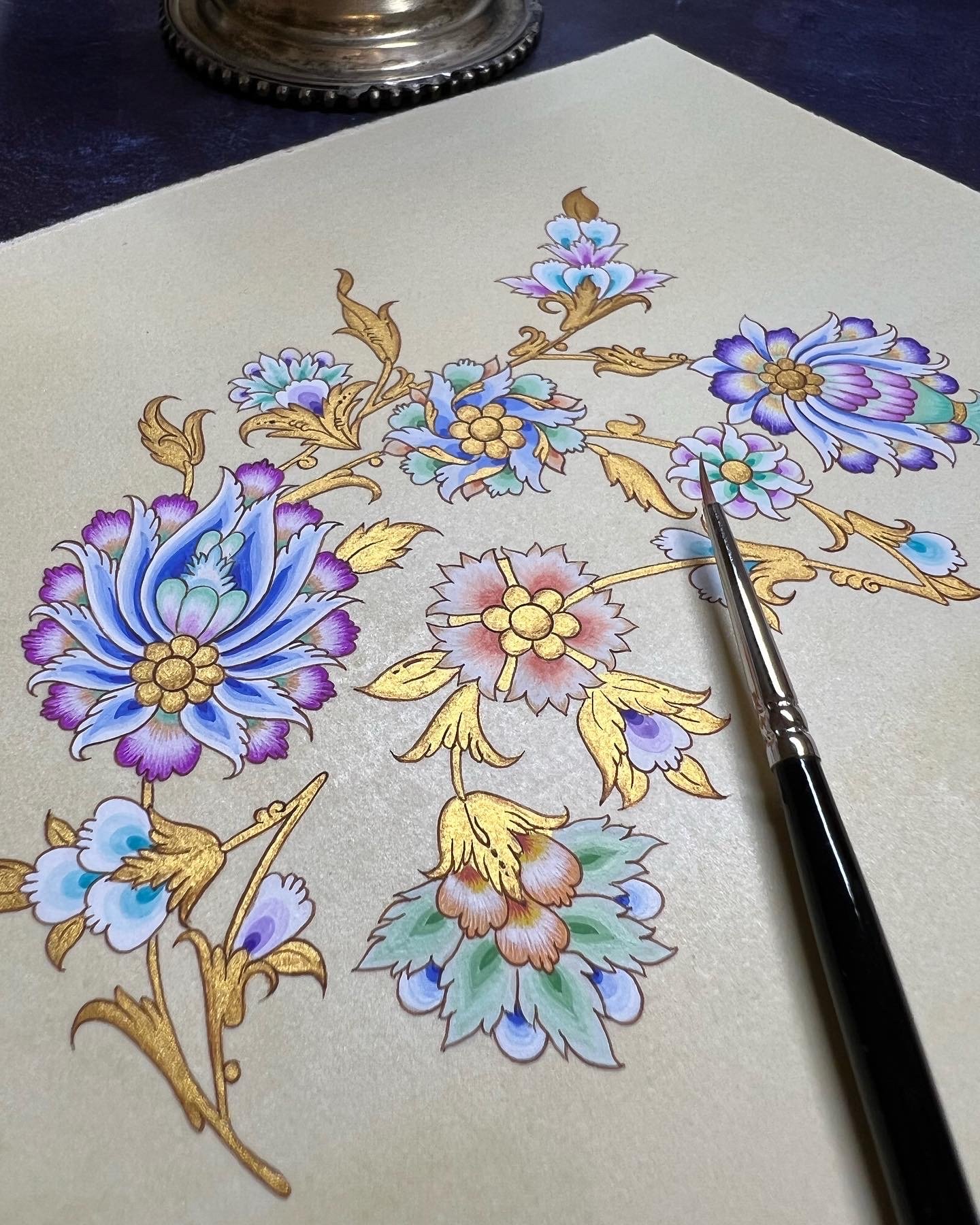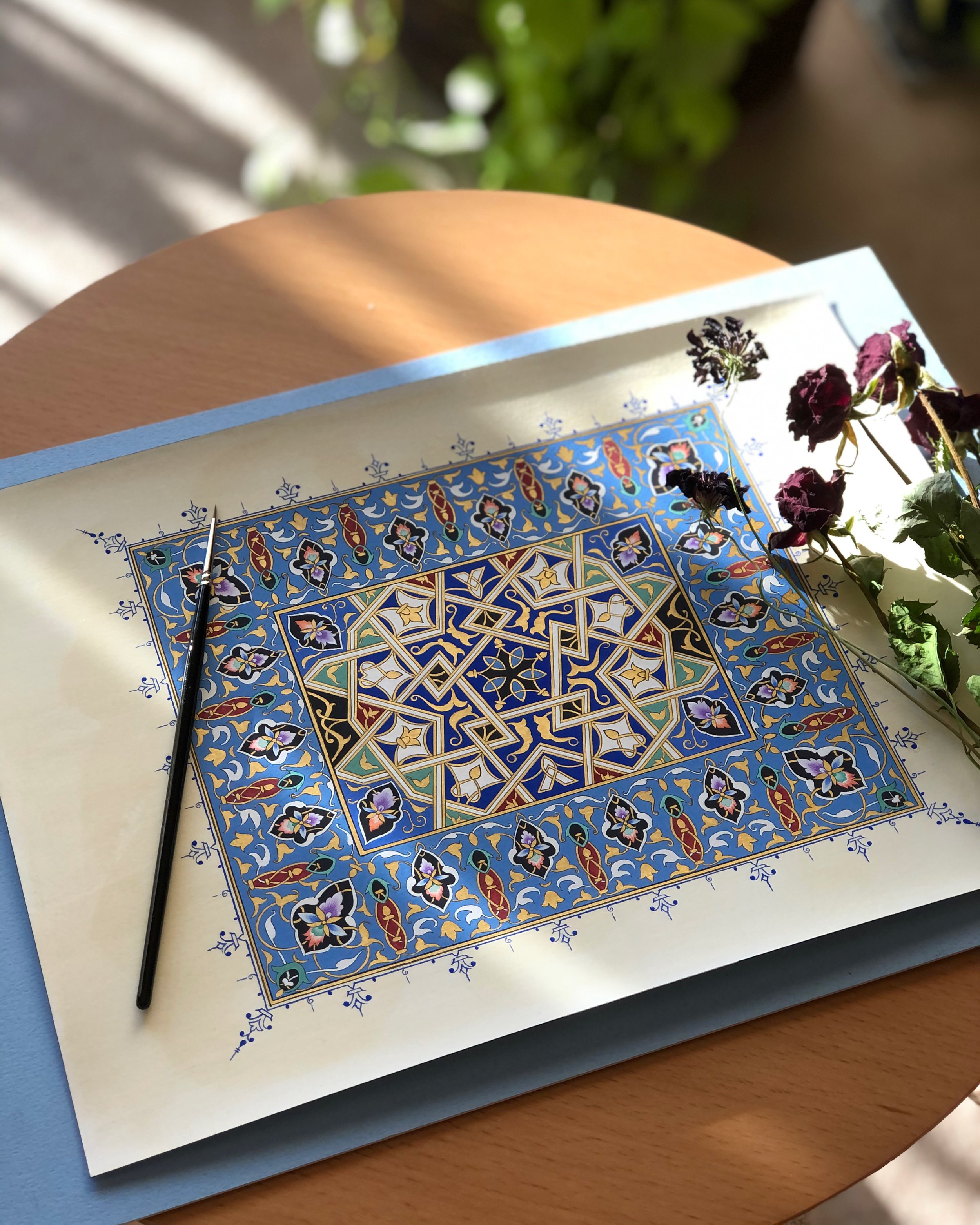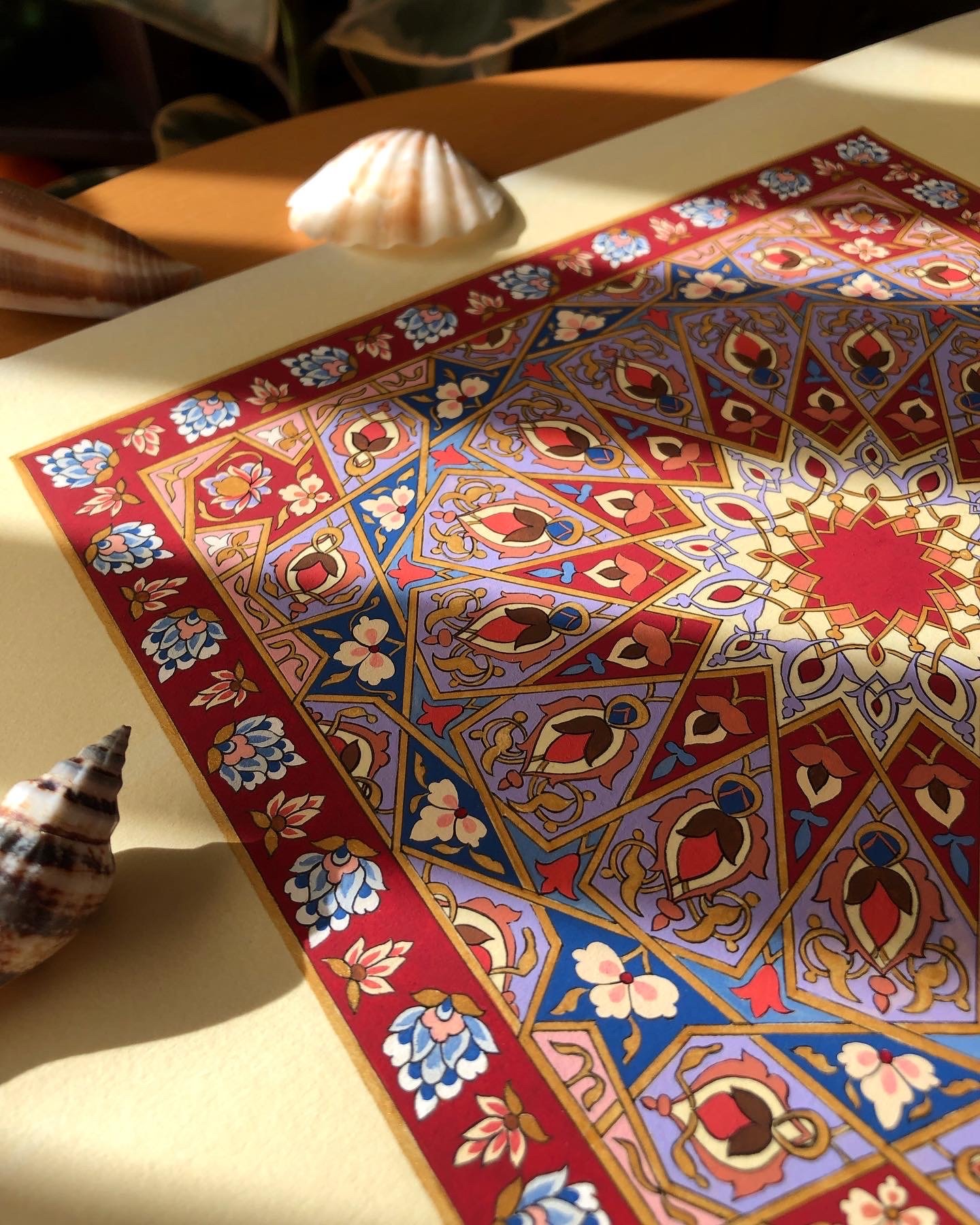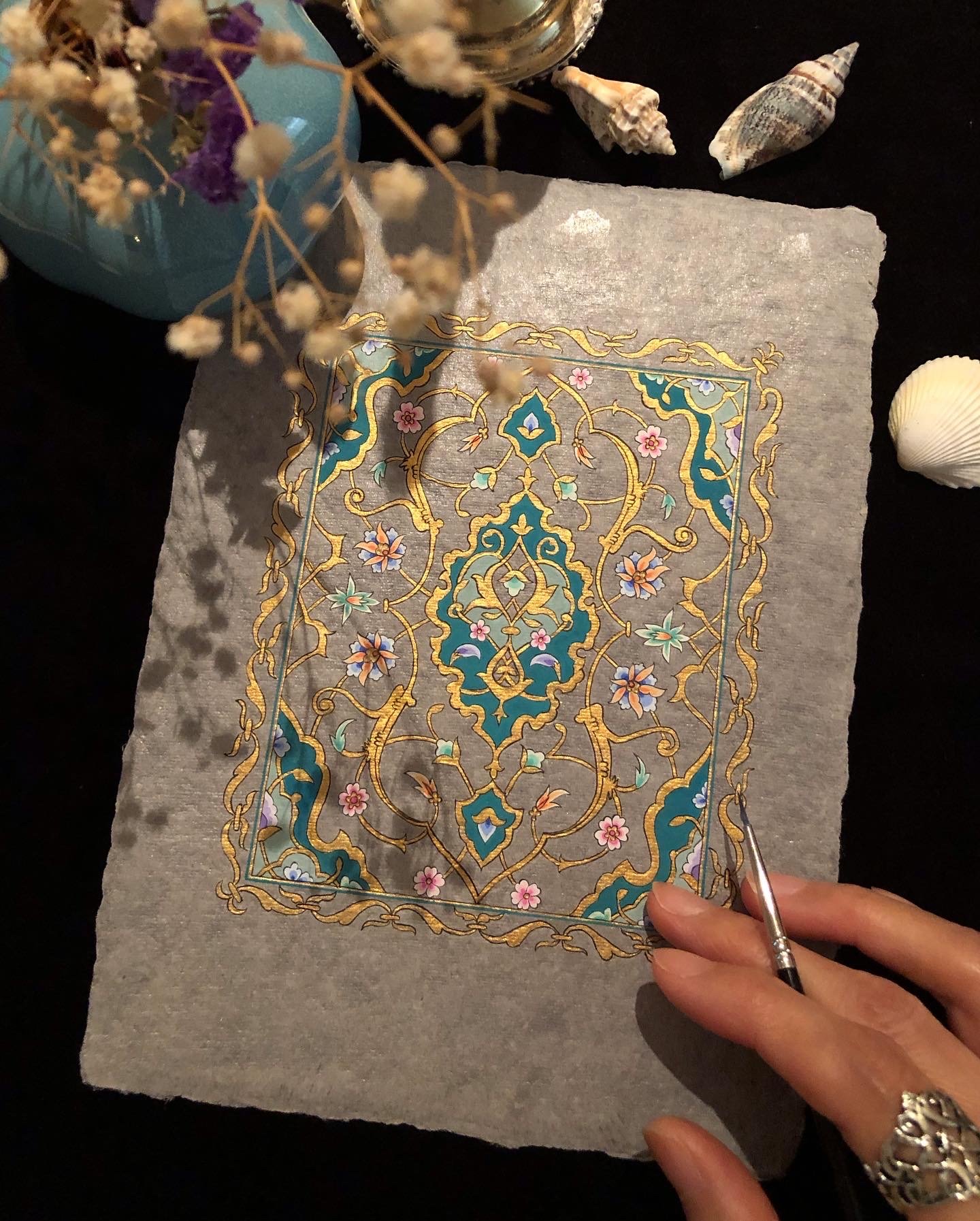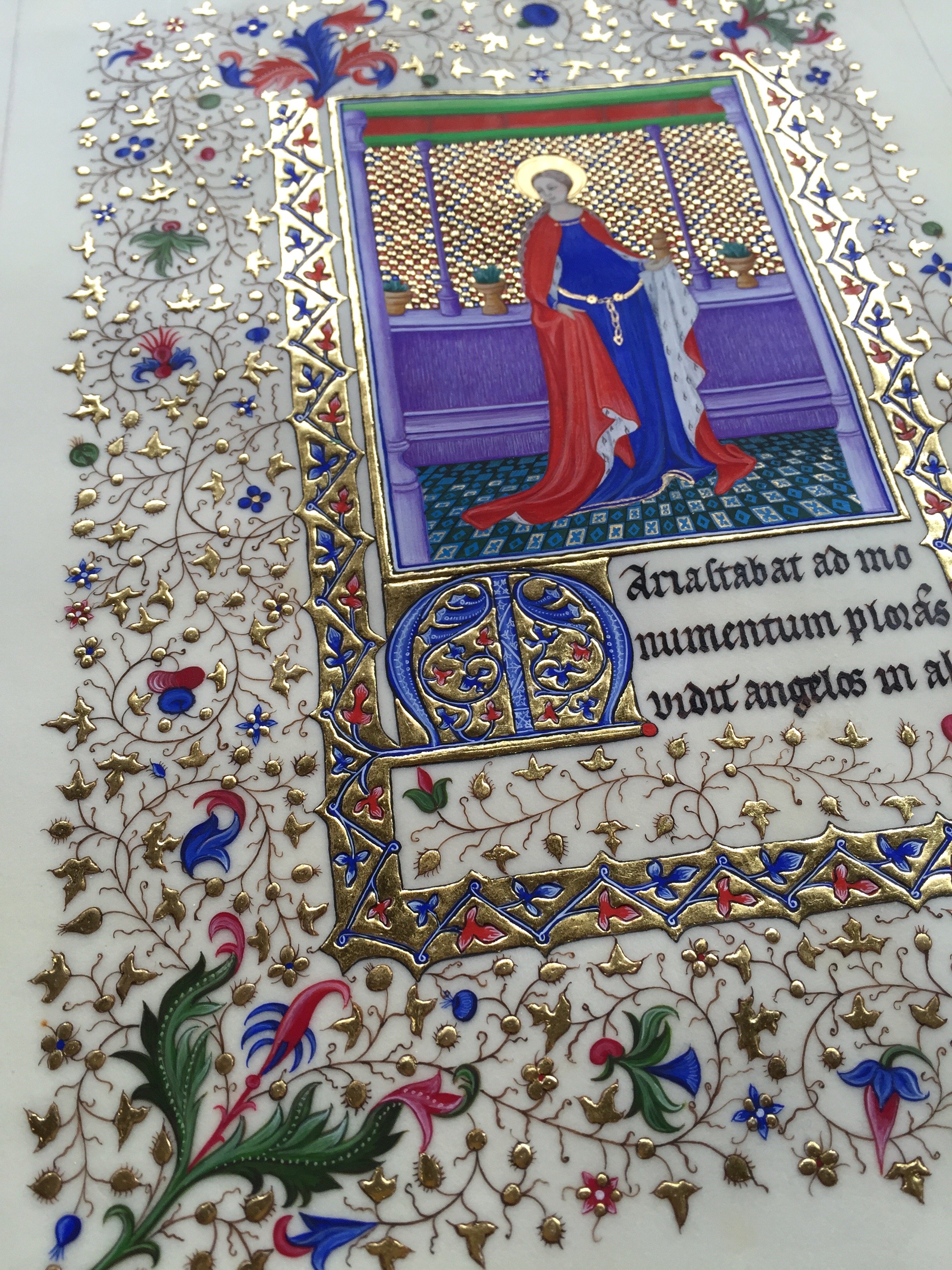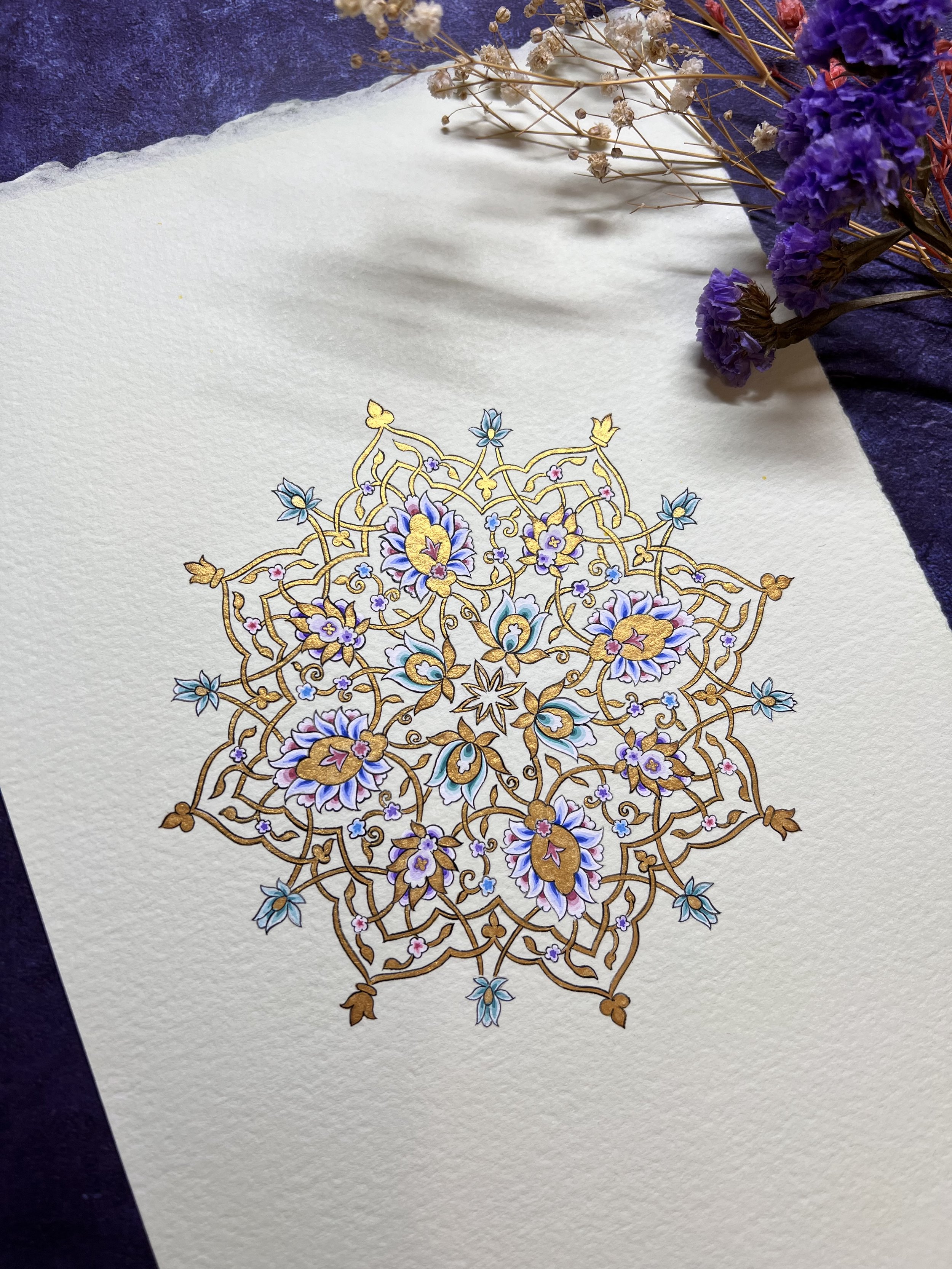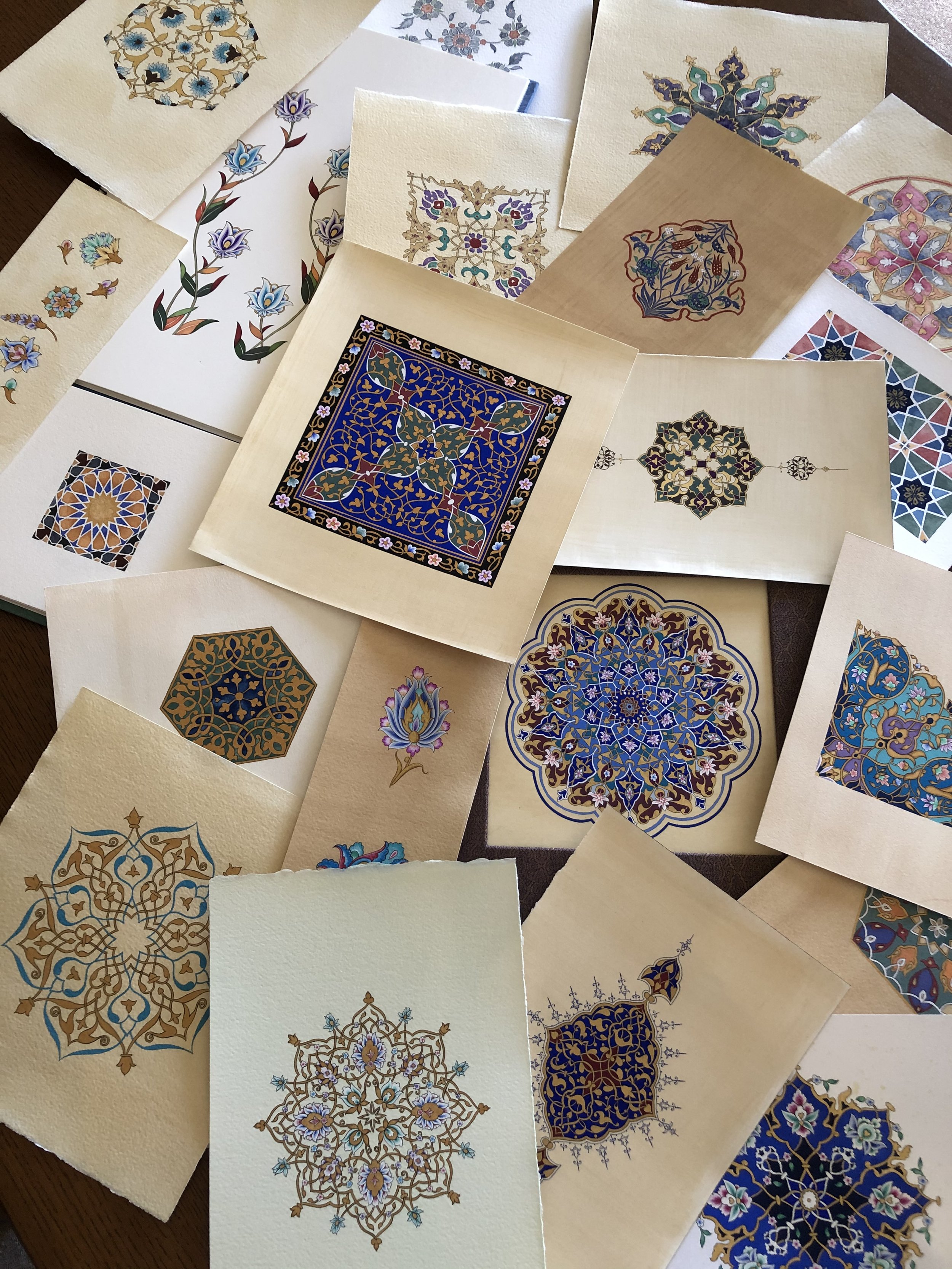Yukiko Futamura has studied Western calligraphy and Western manuscript illumination under artist Miwako Kawaminami for nearly two decades. In 2009 she participated in the launch of Shell Studio, and exhibited at the Shell Studio Exhibition held in Tokyo in 2015 and in Osaka and Tokyo in 2019. In addition, she exhibited at the Atelier MoonShell exhibition and Japan Calligraphy School exhibition. In 2019 she participated in a reproduction project of the Naito collection, a medieval Illuminated Manuscripts donated to the National Museum of Western Art by Dr. Naito.
Over the last two years, living through a once-in-a-lifetime pandemic, Futamura also began to study Islamic art, specifically illumination and miniature art. She studied Islamic illumination under Esra Alhamal, Tehreem Pasha, Samira Mian, and Persian miniature under Anahita Alavi, after being inspired by Islamic art in Arab and Middle Eastern culture and architecture. Since 2020, she has contributed works to the charity calendar in which artists from 12 countries around the world participated. She is also a member of The Illumination Club, presided over by Esra Alhamal. We had the opportunity to interview Futamura about her inspiration, teachers and process for organizing her compositions.
Could you please share a little bit of information about your background in the arts? How did you get started?
My parents loved art and had a hobby of oil painting. They have taken me to various art exhibitions since I was a child. Quite naturally I started drawing simple sketches and watercolors. From 2005, I started attending Western calligraphy classes in Tokyo. The teacher also taught Western manuscript illumination. That was the first time I came across the art of illumination. I soon started attending the Illumination class. My work is mainly decorative patterns in the Bible and the Book of Hours. I use gouache, shell gold, gold leaf and paint on vellum using the techniques of the time. I exhibit my works at exhibitions every few years.
What inspired you to study traditional Islamic illumination
I think I've been attracted to Islamic art and exotic things since I was a child. I was fascinated by the decorative patterns of the mosque, Arabic music, and traditional Indian and Middle Eastern costumes. The Taj Mahal in India, the Alhambra Palace in Spain, and various buildings and mosaics of Arab culture that I saw in Morocco and Sicily made a strong impression on me. I've always been interested in Islamic illumination and wanted to learn it, but I didn't have the opportunity. However, when I had more time to stay home in the 2020 pandemic and wanted to start something new, this was the first thing I wanted to do. Just around that time, I found Golden Flower Challenge hosted by Esra Alhamal on social media. This was a challenge to freely color an Islamic flower pattern using a template given by the host each day for 14 days and post it on Instagram. Every flower pattern was very beautiful and attractive, and I enjoyed drawing it. I felt that the door to a new world was opening. It was also fun to see works with the same motif posted from all over the world. I am grateful that I was able to meet many artists there.
How do you come up with your compositions? What other art forms are you influenced by? i.e nature, culture, other art traditions.
Two years have passed since I started this art journey. I continue to study at workshops, online courses, books, and more. I draw the assignment patterns of the workshops. I choose patterns myself and draw with reference to manuscripts, mosaics, tiles, and carpet designs. Sometimes I design myself. I simply choose what I find beautiful and draw them. Recently, I've been seeing more and more Japanese paintings. And I have come to be aware of my cultural background. It is no wonder that what I see and experience is unknowingly reflected in my work. I'm not sure how it appears, but my work may look Japanese or oriental to non-Japanese people. Perhaps there may be some differences in the sense of color and the arrangement of motifs. If so, I now think that it is natural and will be a unique personality in my work. I love to draw fine and delicate patterns, so this may be one of my characteristic styles. I am now interested in the influence of Islamic art, especially ancient Persian art, on Japanese art. Interestingly, learning Islamic illumination inspired me to become interested in my own culture.
Your favorite artists or artists whose work inspires you.
As I said earlier, I was very much influenced by my first Islamic illumination teacher, Esra Alhamal. I learned Islamic illumination with her Islamic illumination course and workshops. The motifs she chooses and color schemes give me fresh inspiration every time. I also like the work of Tehreem Pasha, Samira Mian. I participated in their workshops as well. I am learning Persian miniature under Anahita Alavi. It is fascinating to know the meaning of motifs, historical background, and various techniques. I always pay attention to their work. Not only these artists, but each and every one of the Islamic art-loving communities I have met is irreplaceable to me. And they continue to inspire me.
All artwork courtesy of the artist. Please visit Yukiko’s Instagram page for information on her work: @yukiko_futamura
